
Objectives of the service

Pandemic responses such as COVID-19 require a coordinated regional, national and international response where key personnel may be required to operate in a fully distributed but individually isolated environment. Traditional approaches to major emergencies usually involve the setup and running of a local, national and international series of Command and Control (C&C) centres where experts, emergency response commanders, medical management and Government personnel gather to coordinate actions and responses. This approach is highly inefficient and also doesn’t match the restrictions that are put in place for pandemic responses where physical distancing, travel and self-isolation is imposed on individuals.
An IT driven solution is required to provide the full functions of a Command and Control centre in a distributed way, where even greater support to the individuals is required due to lack of face to face interactions. This "Virtual C&C centre" will provide all the key services and supports to facilitate effective coordination, communication, decision making and action management for key pandemic response personnel.
This IT solution is also required to help the stake-holders in processing and managing the sheer amount of data involved in tracking the pandemic evolution and tracing the contacts of the people found infected.
Users and their needs
The expected users, i.e. pharmacies, general practitioners, nursing homes, national, regional and local health bodies, hospitals and first responders on the ground are represented by the “National Health Service” and the “Irish Centre for Emergency Management” in Ireland and by the “Istituto Nazionale Malattie Infettive Lazzaro Spallanzani” and “Fondazione Policlinico Universitario Agostino Gemelli” in Italy.
Their major needs are:
-
Have all relevant information (e.g. current situation, key issues, priorities and actions) handled by a single and integrated system also providing virtual conference capabilities.
-
Provision of an integrated Command and Control environment which can be used in a distributed manner.
-
Management of information storage, categorisation and access.
-
Simplify the insertion / editing of alerts and notifications
-
Facilitate and speed up the processing of the data involved in tracking the outbreaks evolution and tracing the contacts of the people found infected.
-
Provide centralised means for management of Case Report Form and Contract Tracing information capture with related analytics for hot spot identification and geographic identification of cases evolution.
Service/ system concept
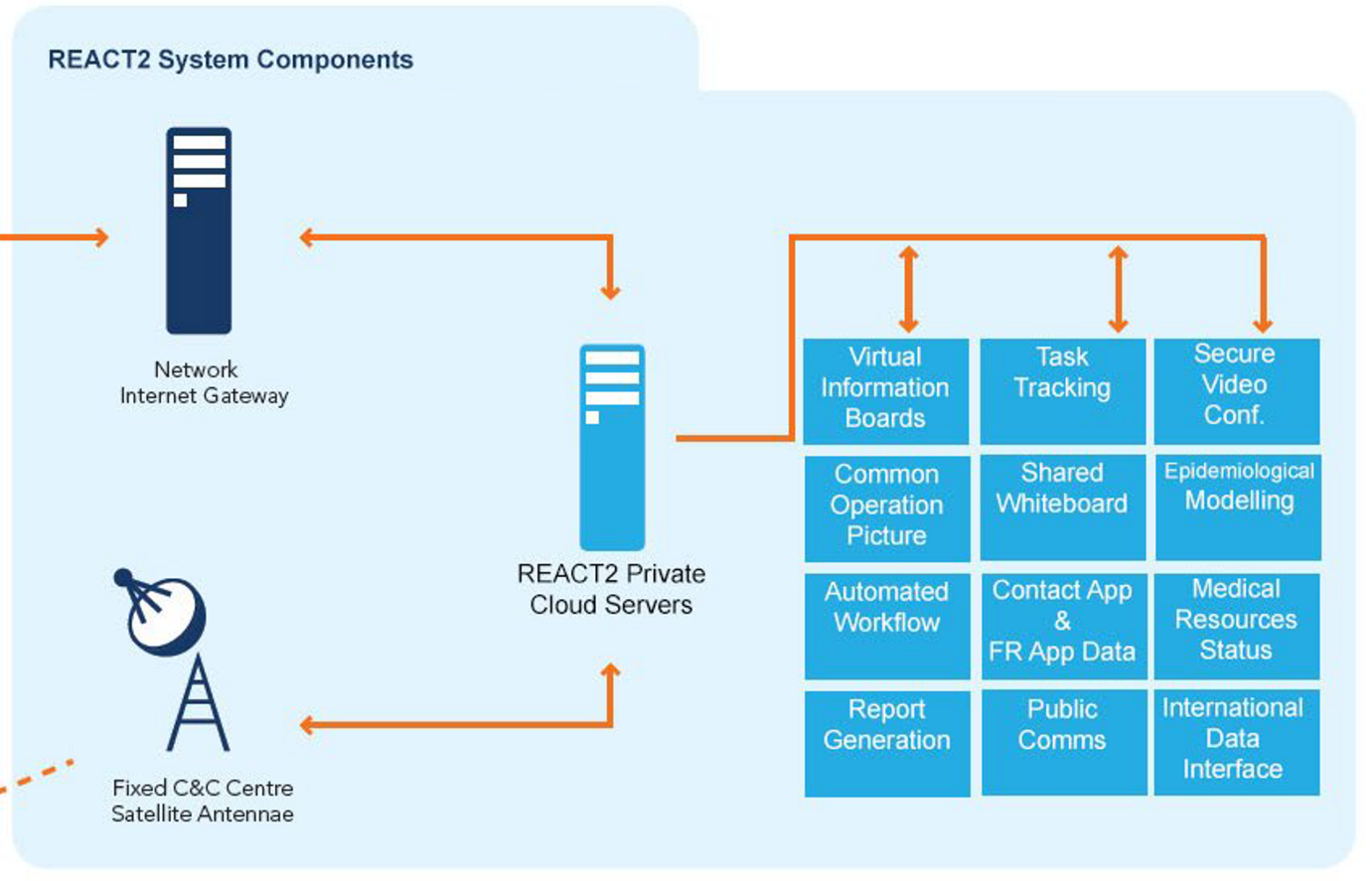
React 2 provides its end users with a series of integrated functions / capabilities like Virtual Information Boards, Task Tracking, Common Operational Picture, Shared Whiteboard, Surge capacity, Automated Workflow, CRF/CT information management and Pharmacy/GP/Nursing Home information reporting mobile apps.
These functionalities are made available via a single integrated system, deployed as a series of distributed servers. The services are accessible via the normal communication infrastructures, i.e. Internet and mobile infrastructures.
Satellite communications are used when geographic restrictions, weather conditions or disasters might make the normal communication infrastructures unusable.
Space Added Value
Satellite communications are used when geographic restrictions, weather conditions or disasters might make the normal communication infrastructures unusable.
The used satellite services are “Avanti” and “Hylas” in Ireland and “Athena-Fidus” in Italy.
The architecture of the REACT2 system provides for the integration for the use of satellite communications as the communication infrastructure between the components which the end user interacts with and the centralised back-end cloud based application and storage layers.
Through the integration of such a satellite communication link, it provides the support for use cases where end users require the usage of the front-end services of the REACT2 system and the exchange of interrogation of data stored within the REACT2 services where terrestrial forms of communication are not reliable, of low bandwidth or not available. Example of usage of SatComms include:
-
a fixed station (command and control centre – main hospital)
-
a mobile station (deployed at the incident location e.g. camp hospital, on a Navy ship).
All of the major subsystems of the REACT2 system are architected to support such satellite communication.
-
C&C subsystem – This presentation layer front end layer and API endpoints layer can use the satellite communication link to exchange information as required over the communication link with the underlying business logic and storage logic for data storage and application execution.
-
Sentinel portal – The front-end web and mobile based application can use the satellite communication link to the back-end application and data storage through access to the backend API calls via the communication link.
-
Back-Office Subsystem – The visual dashboard can use the satellite communication link to exchange information via the centralised API gateway for access to the business logic and storage logic.
Some of the identified benefits for integration of Satellite communications into the overall REACT2 solution were as follows:
-
The TCP/IP protocol can be used for the communication of information between the front-end services of the REACT 2 applications and the back-end services that are located on a centralised cloud based infrastructure.
-
The latency involved with satellite communication do not affect the provision of services or the invoking of back-end services.
-
The satellite communication link and integrated ground station provides a gateway for access to standard internet URL’s. Since REACT2 is deployed on cloud-based infrastructure the services can then be directly accessed.
-
The satellite communication link is bi-directional. Therefore, over a single satellite link both TX and RX are supported. This allows for the front-end services to request information from the back-end services via the exposed API gateway or service interface. Once the back-end services process the request and information is generated this information can be returned over the satellite link and delivered as a response to the front-end service requests.
-
The provision of both TX and RX services over the satellite communication link means no separate terrestrial link is required for example for the front-end services to make requests for data/information.
-
The REACT2 solution provides for one end user for example in Italy to use one satellite communication for information exchange and a second end user for example in Ireland to use a different satellite communication system to access the shared information. This provides flexibility in the satellite communication infrastructure used within different geographical regions while retaining the full sharing of information between the different regions and end users.
-
The satellite communication integration into the overall system architecture uses a star topology for communication so if two end users are at two different locations but using the same satellite communication network no direct link between the two sites are provided. All communication must go firstly from the end users via the satellite to the ground station, then back from the ground station to the satellite for sending to the other end user.
Current Status
The REACT-2 system pilot demonstration phase has been completed successfully and final review milestone has been held. The focus is now on follow up REACT2 commercialisation activities.
The pilot demonstrators took place in parallel both in Ireland and Italy to validate the system features and to enable a range of end users to gain ‘hands-on’ experience in usage of the service.
Different end user scenarios were supported in the different country pilots each focusing on priorities identified by end users during the requirements gathering phase. The main focus of the Irish pilot use cases trials was on the ‘REACT-2 Virtual Command and Control boards services’ and in Italy the pilot use cases focus was on the ‘REACT-2 Back-Office services’.
The Italian trial focused on the Case Report Form (CRF)/CT data capture, analysis and analytics. During a joint Fondazione Policlinico Universitario Agostino Gemelli (FPG) and Italian Navy (ITN) coordinated trial all services were successfully demonstrated. The ITN elements of the trial were performed on board the Italian Navy flagship Cavour Carrier and satellite communications were deployed to communicate and exchange data with REACT2 partners medical facilities.
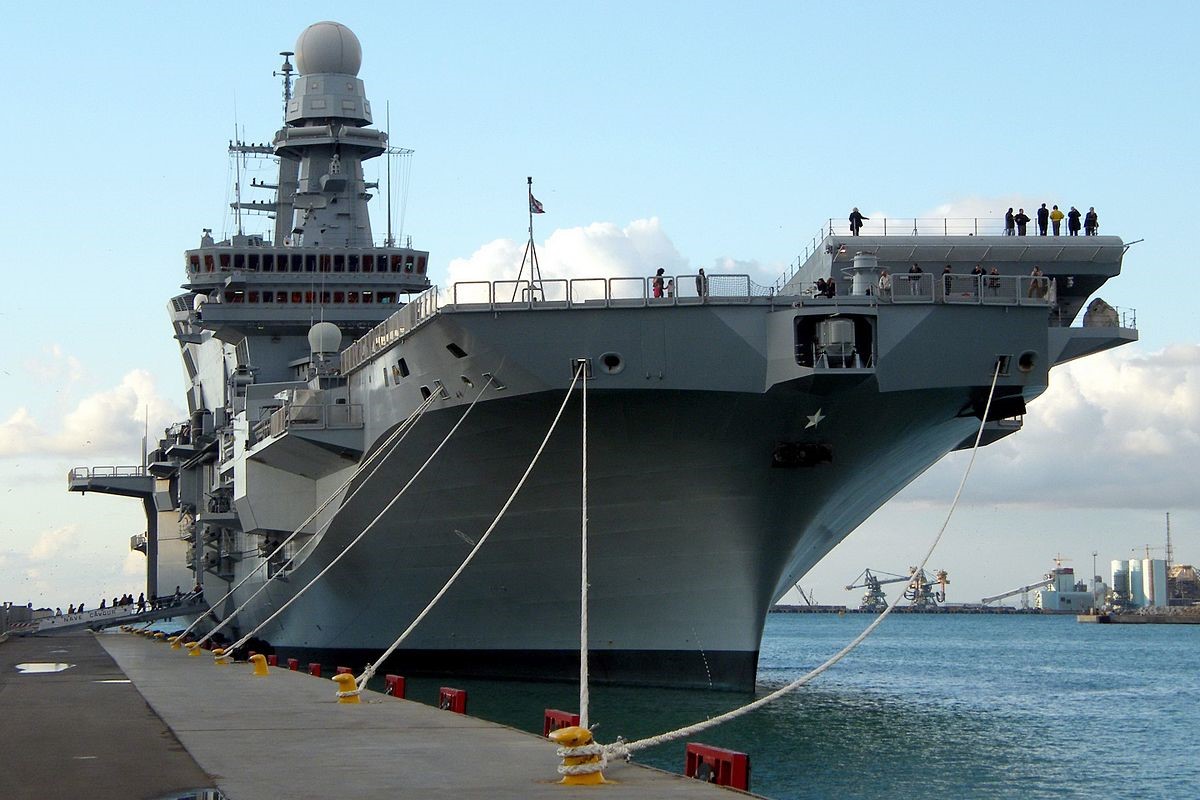
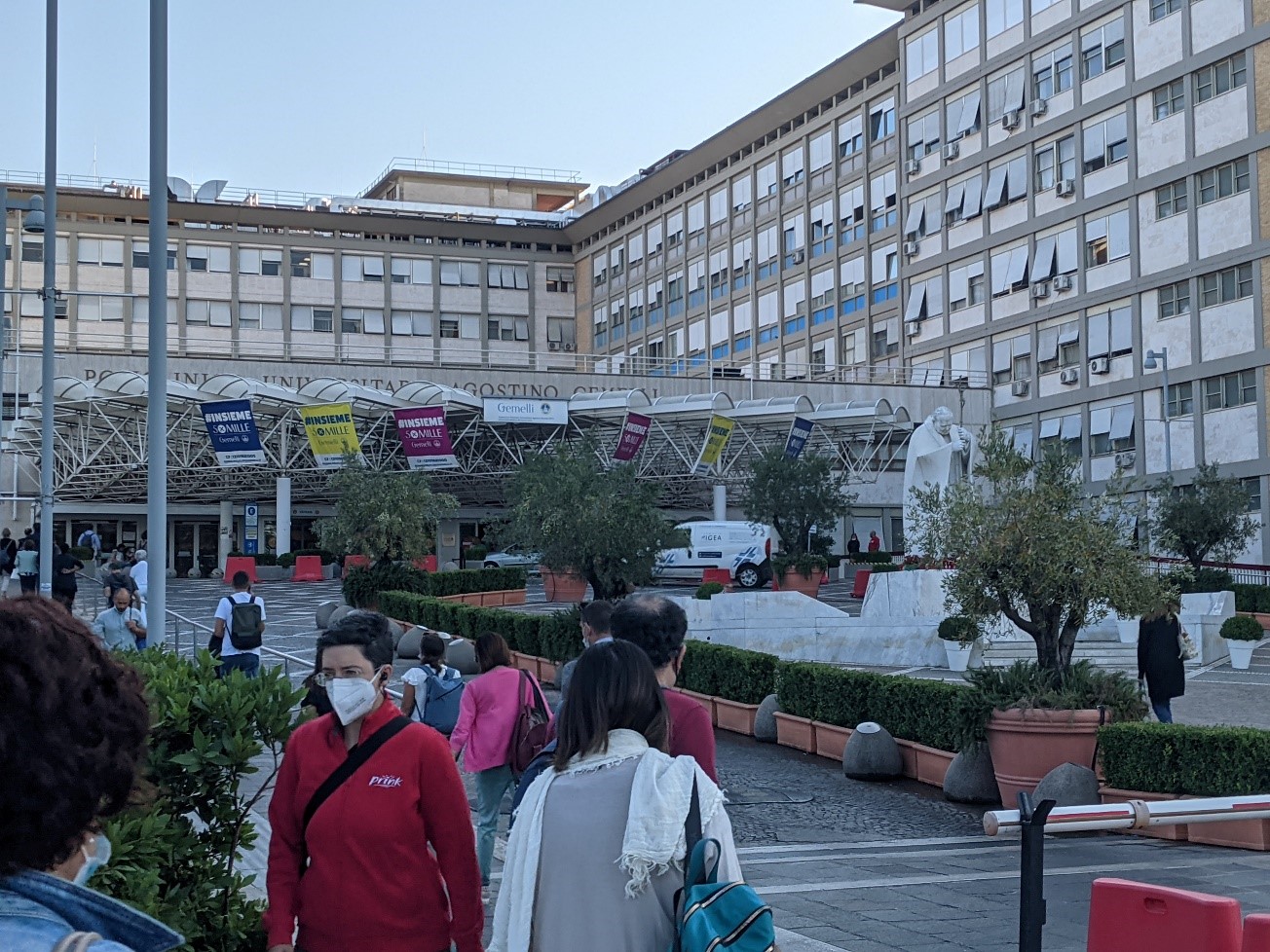
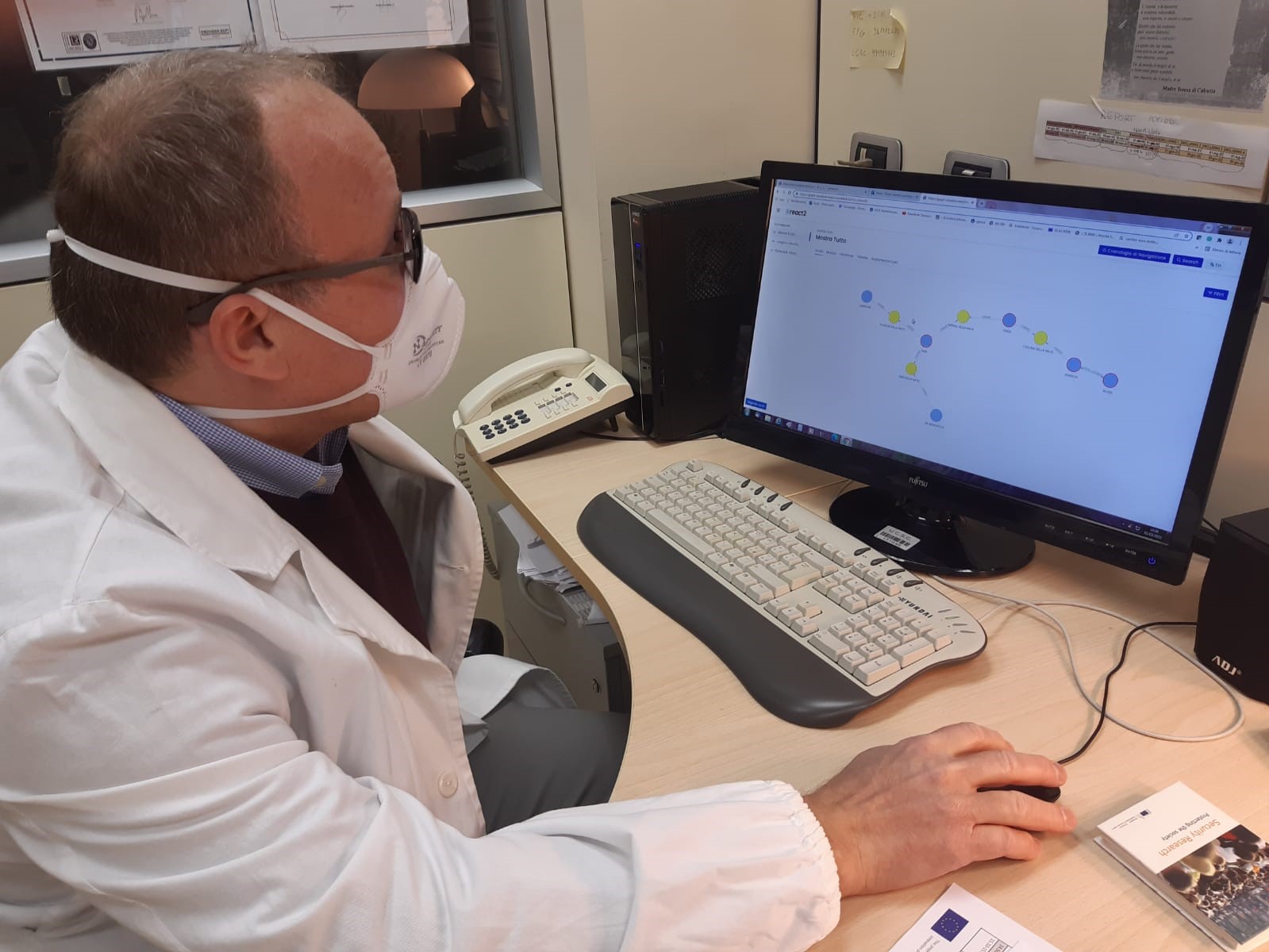
The Ireland trial focused on several use cases:
-
Demonstrating how a pop-up Vaccination and or test centre can be linked to the central data collection system via a satellite link.
-
Scenario planning using the REACT2 system for an incident. For example, involving a large passenger vessel in a disease outbreak situation.
-
Usage of REACT2 for collecting data from target pharmacies, doctors (GP Practice) and Nursing and Care homes, demonstrating the very valuable impact of turning every Pharmacy, every GP practice into a functional node of a geo-located surveillance system
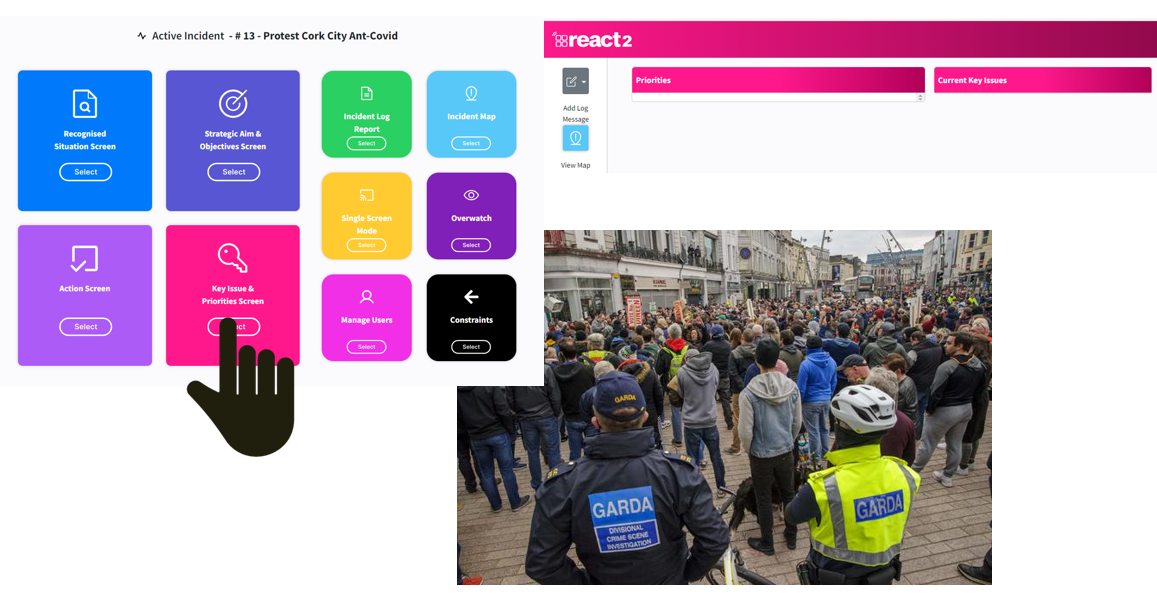

As well as the usage of REACT2 in trials the system was also used in two real cases during the trial, firstly in the support of the major emergency planning for a major fire at the Killarney National Park in south west Ireland and secondly during the support response to a COVID protest held in Cork city.
During the pilot phase, feedback from end users on the benefits of the system services over the current approaches, system usability and effectiveness was constantly gathered by the project partners along with a range of KPI’s.





